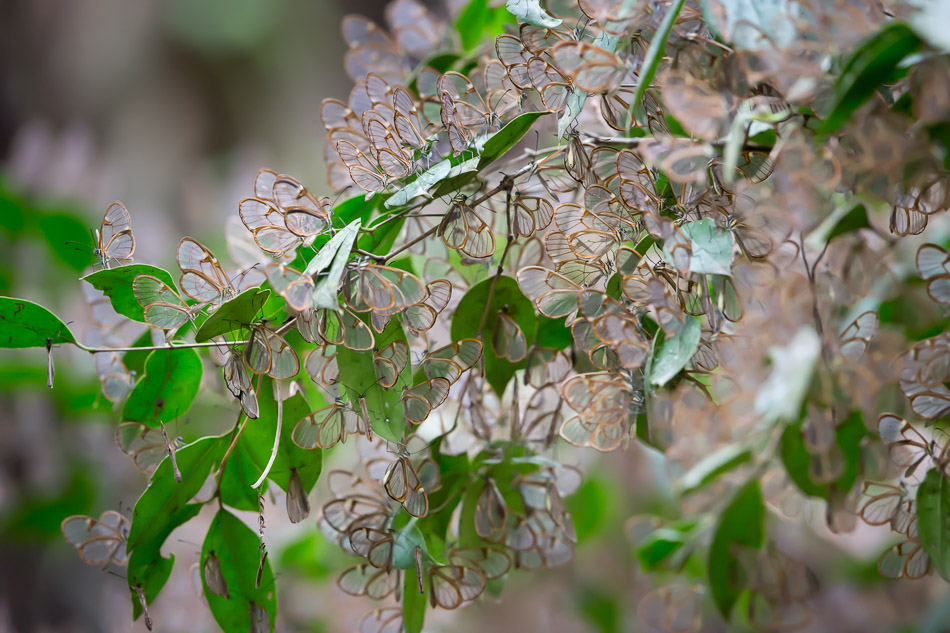Butterflies and smartphones have a lot in common.
We explored a trail, winding through the dark, dense and damp forest. Moss hung from the trees, bromeliads and orchids festooning their trunks and branches. Then we stopped and looked in awe, before us the evergreen leaves were covered with what seemed like a mist, making it difficult for us to focus on what was there. This was no ethereal mist, we were seeing butterflies, millions of butterflies, suspended on every leaf and twig from knee height to tree-top level and the slightest touch on a branch or leaf would send a storm of wings fluttering upwards as they moved position.
On close inspection we found that we could look through their wings. These were the amazing Glasswing butterflies! We didn’t know when they had arrived, we didn’t know why there were so many or what they were doing! These questions we were unable to answer, but often with wildlife, just seeing them was enough. It was a special moment and by the next day not one was to seen, they had vanished as quickly as they had appeared, a rain forest secret.
Paula and I were ‘Living Wild’ in Calilegua National Park in the NW of Argentina. We were there to find birds in the Southern Yungas rainforest, a habitat for which this National Park is famous but instead had found these amazing butterflies.
In a dark temperate rain forest, bright shiny objects are noticed easily. The sunlight that does penetrate the canopy pierces the foliage with spear-like brilliance, reflecting again and again off the waxy green leaves. Butterflies are abundant, black ones with red spots, white ones with blue streaks, every colour combination imaginable.
Evolution pushes experimentation as the genes mutate to trial new ways to survive. Instead of being one of many multi-coloured butterflies, a strategy to experiment with invisibility was worthwhile, for over the millenia this family of butterflies has achieved a cloak of virtual invisibility.
For this invisibility to succeed they needed the membrane of scales that makes a butterfly wing to be non-reflective and accordingly scientists have found that the Glasswing butterfly wing does just that. The wing surface is not only much less reflective than a sheet of clear glass but also has the capability to suppress infrared and ultraviolet light, the two wavelengths most used by birds and amphibians in detecting prey species. Transparent wings are really all about the play of light and shadow, this makes sense as Clearwings usually inhabit the lower parts of tropical forests characterized by alternating shadows and shafts of bright light.
To us the surface of the wing of a Glasswing butterfly is flat and smooth but seen using an electron microscope the surface is a chaos of peaks and troughs. This means light is not reflected back but passes through the surface and refracted. Birds and other predators are confused, they cannot see the insect as it darts and manoeuvres through the forest.
Nano technologists have taken this marvel of nature and incorporated the same technology into the screen of smartphones. So when you are walking down the high street on a sunny day and you can see the messages on your screen so well – thank the Glasswing butterflies for that.

